Lightning Damage
Last week, lightning struck at Tidmarsh, the former cranberry bog where I’m conducting experiments for my Ph.D. research on sensor networks. We’ve had some nearby lightning strikes before that have caused some minor equipment damage (it’s one of the perils of working in this environment) but nothing quite so major as this. We have some protection against lightning—perhaps not as much as we should have, but it can be quite challenging when we have many cables extending out over a large area.
I was actually there on site when it happened, making myself a cup of tea in the guesthouse. I was looking the wrong way to see the actual bolt, but saw a flash and heard the thunder instantaneously, so that must have been it.
We lost pretty much the entire audio installation at the former impoundment. Closer examination of the damaged equipment tells the story of the path the current took.
I don’t think anything was hit directly, or the damage would have been even more extensive. Most likely, the lightning hit the ground very close to where one of our cameras is out in the marsh. That traveled about 150 meters through a CAT6 ethernet line, into port 4 on the switch in the south box:
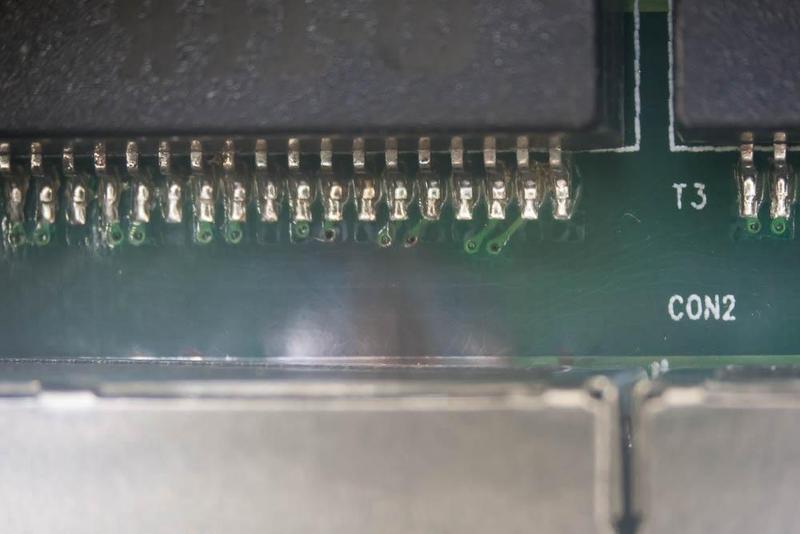
The metal at the bottom of the photo is the metal housing on the ethernet jack; the black box with the pins at the top is the magnetics. There’s some definite charring and delamination of the PCB. From there, current probably followed the Power over Ethernet (PoE) path, through the center taps on the transformers. On the other side of the board, several ICs are pretty well obliterated, with sections of plastic completely blown away:

This is probably a switching regulator for the PoE power. On the reverse side of the board is the likely exit point, where current found its way to the grounded case. These unpopulated pads show some charring:
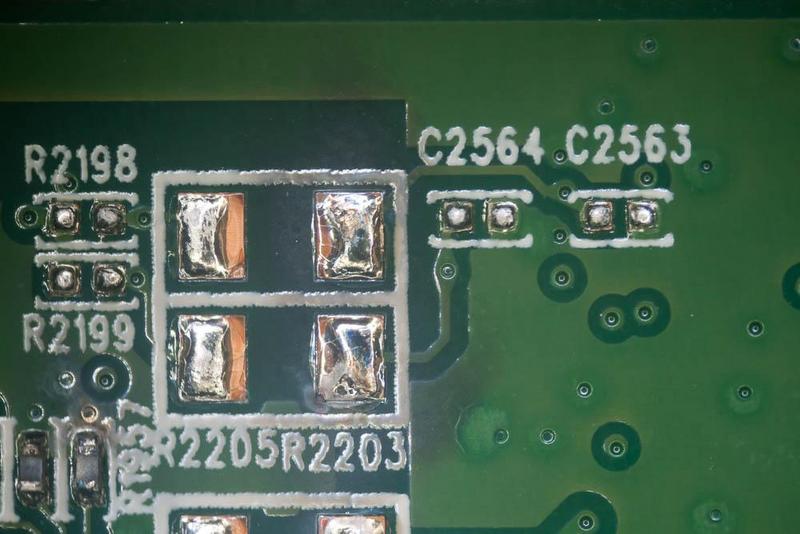
… but the real story is told on the case itself, where there are definitely signs of arcing and pitting underneath where those pads were on the PCB:
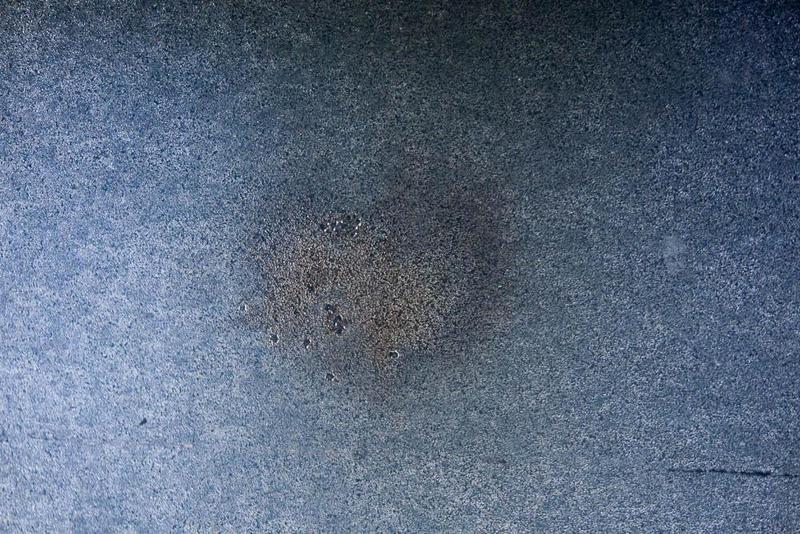
High voltage obviously was present on the man digital power supply rail on the PCB, as several other chips on the board that don’t have anything to do with PoE are pretty clearly toast:

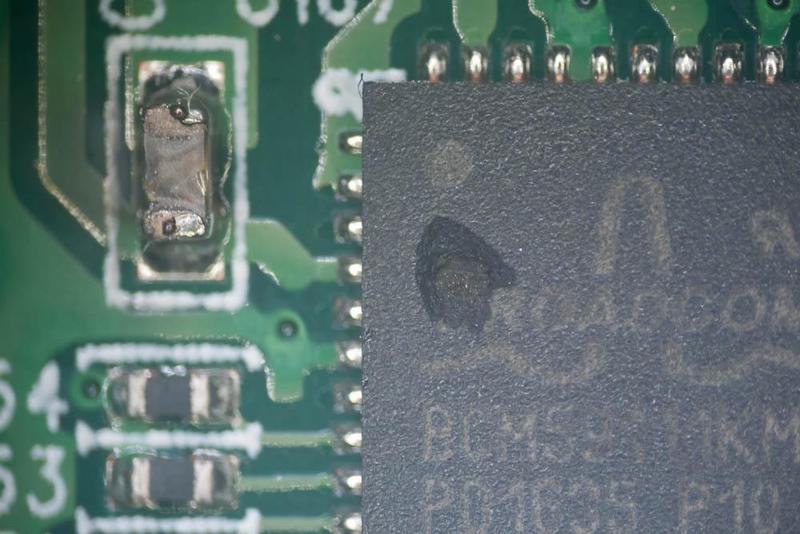
Those little holes blasted into the chips are evidence of the magic smoke getting liberated. The bypass capacitor to the left of the second chip also looks pretty unhappy about the voltage it’s seen.
In the other damaged equipment, the story isn’t quite so clear. The south audio input box (S16) has a couple damaged op amps/switches on two of its preamp channels:
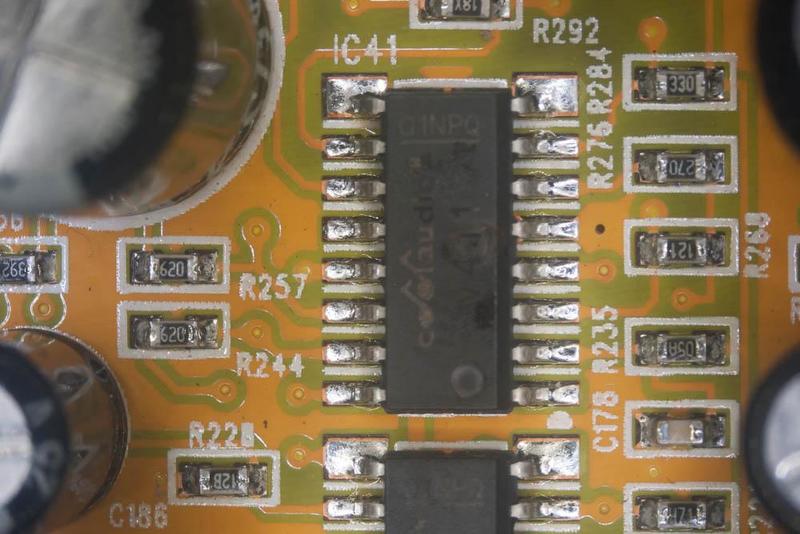
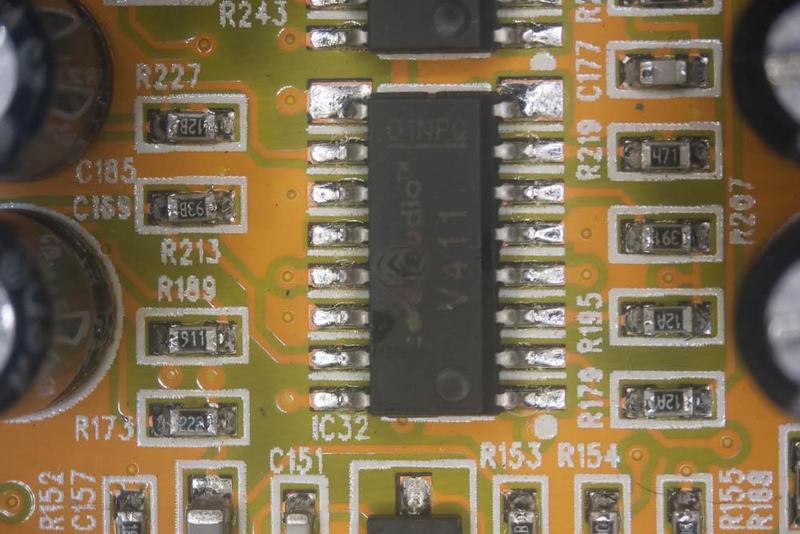
Some of the input resistors have clearly seen more power than they’re rated for, too:
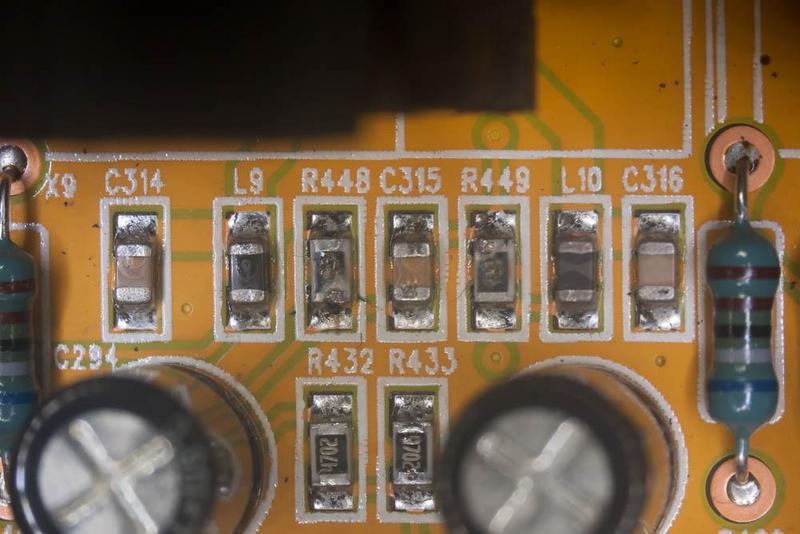
Since the most obvious damage here is around the microphone inputs, and this box isn’t connected at all to the ethernet switch, it’s likely that this was a second path current took into the system, from the strike location into a microphone or two and through the cables into the preamps.
The north box also took some damage. The mixer/audio interface (X32) lost functionality in one of its input boards (not yet photographed) but remains functional as a mixer (still powers on, screen works, channels 1-8 still work, and still communicates on the network).
The ethernet switch at the north box miraculously still works as a switch and continues to move packets on both the fiber and copper ports. All of its PoE functionality is dead, though. Since no copper ethernet cables run from that switch into the field where the strike was, it’s likely that voltage came from the ethernet cable that goes between the two boxes, damaging the directly connected PoE circuitry but sparing the galvanically isolated ethernet functions. The north switch is still operating in the field so I haven’t disassembled it yet to inspect it for damage. However, I have a pretty good idea of where current found its path to ground here, as the Intel NUC computer that was attached to it is now completely dead.
A close inspection of the NUC’s ethernet section reveals some termination resistors that have clearly seen power beyond their rating:
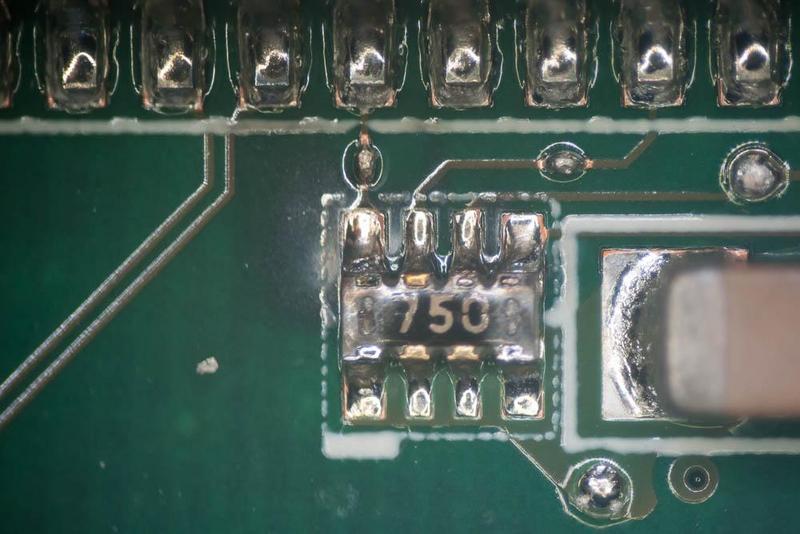
And finally, near the ethernet magnetics, a PCB trace that’s completely vaporized:
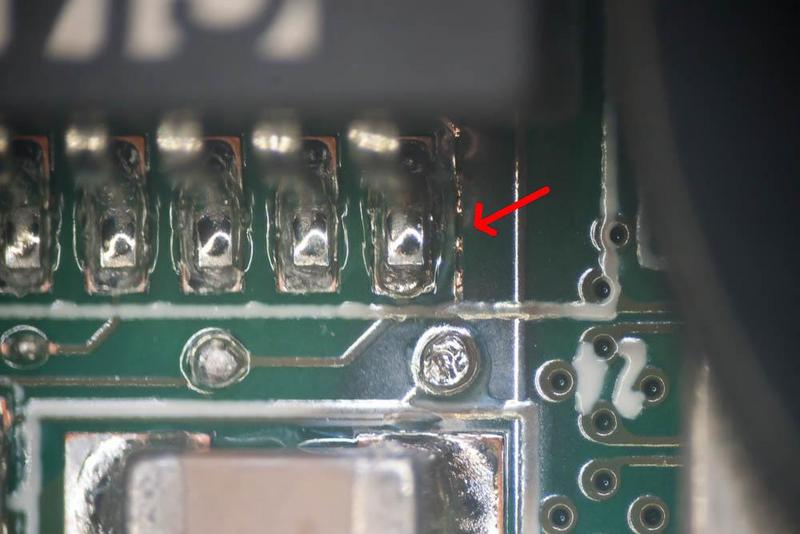
So most likely, lightning struck near the marsh camera, traveled up the cable to the south box, completely destroyed the ethernet switch there, finding a path to ground by going through the PoE circuitry and arcing over an 8mm gap to the case. It also propagated down the ethernet cable that runs to the switch in the north box, where it found a path to ground through the PoE circuitry to the NUC computer, vaporizing some traces in the process. Independently, high voltage was picked up through microphone cables, damaging several preamp channels.
As we rebuild, it seems like it will be a good idea to make sure there’s surge protection on every ethernet connection, not just the ones that seem most at risk (like we had before). And it might be time to design some microphone surge protectors—something that doesn’t really exist on the market.